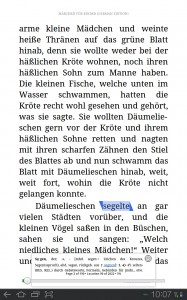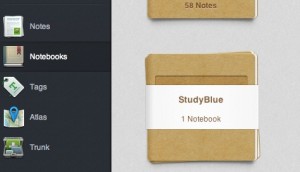You probably know and love the feeling of discovering something new and useful in your toolbox – or a new app for your favourite phone – or a secret button in your car (OK, that last thing doesn’t happen that often). And if you’re always looking for ways of learning languages better – you’ll probably have found the four features I’m going to mention today. In case you didn’t, though, here goes: foreign language learners’ Easter Eggs (sort of)!
1. Google Translate phrasebook
This one is a relatively new addition. Click the star under your translation to save it to the phrasebook – then click the icon with a star & book to access the phrasebook. Hey, there it is!
What I like about it: Here’s a super-simple way to save the phrases you use often – all within a tool that’s been tried and tested.
What still needs work: the Google Translate app still has its “favourites” tab – which, as of today, still doesn’t link with the phrasebook. This would make it even more usable. Also, it would be cool to export this to a note-taking system *cough*GOOGLEKEEP*cough*.
2. Kindle dictionary lookup
I’m beginning to really appreciate my tablet. I started reading ebooks in German – that was cool enough. But then I discovered the dictionary lookup feature. When you’re reading in English, it’s an English monolingual dictionary (really challenging for learners). But when the text is in German – you get the German monolingual dictionary!
What I like about it: The text immediately becomes a lot more interactive, and although the learning curve is still steep – this is the kind of reading that really produces results.
What still needs work: pronunciation symbols would be nice – and if there is a way of saving your dictionary searches into a word list, I haven’t figured it out yet.
3. Evernote + Studyblue = BFF
My love affairs with Evernote and Studyblue used to be separate, well-kept secrets: “I really feel great around you, but what would the other say?” – One was brilliant for keeping tabs on most of my work, the other was my preferred way of studying with flashcards.
And then I found out that there’s a way to sync one with the other.
I hate to be risqué on a Saturday morning, but that – in geek-polyglot terms – was a threesome I had long dreamed of.
What I like about it: It’s Evernote. And Studyblue. TOGETHER.
What still needs work: the note-adding process takes some time to get used to – and it’s easy to get it wrong at the beginning. Once you get going, though, it’s hard to stop.
4. TED transcripts in many languages
You know they were there, and you know how good they were. The TED translators should really be given a medal or something: all these talks are getting multi-language support that’s fast, reliable and community-driven. It’s a shame that corporate, paid-for translators don’t work that well!
Anyway – here’s the novelty: it works very well within the TED app, too! That means you can listen to talks you love – and read the transcript in the language you want to study.
What I like about it: seamless, effortless, totally free.
What still needs work: there’s very little that can actually be done here – but on the whole, this is not the most effective way to learn a language (good for fluency and “low-intensity” language workout, but hard to put to more intensive use).
It’s your turn, folks. What new gizmos have you discovered? What made your geek-language-learner instincts tingle? Share it. You know we’d love that.
Wiktor (Vic) Kostrzewski (MA, DELTA) is an author, translator, editor and project manage based in London. When he works, he thinks about languages, education, books, EdTech and teachers. When he doesn’t work, he probably trains for his next triathlon or drinks his next coffee.
BRAVE Learning (formerly known as 16 Kinds) is a lifelong learning and productivity blog. If you enjoy these posts, please check out one of my books and courses.
My recent publications, and my archive, is now all available on my new project: PUNK LEARNING. Hope to see you there!





